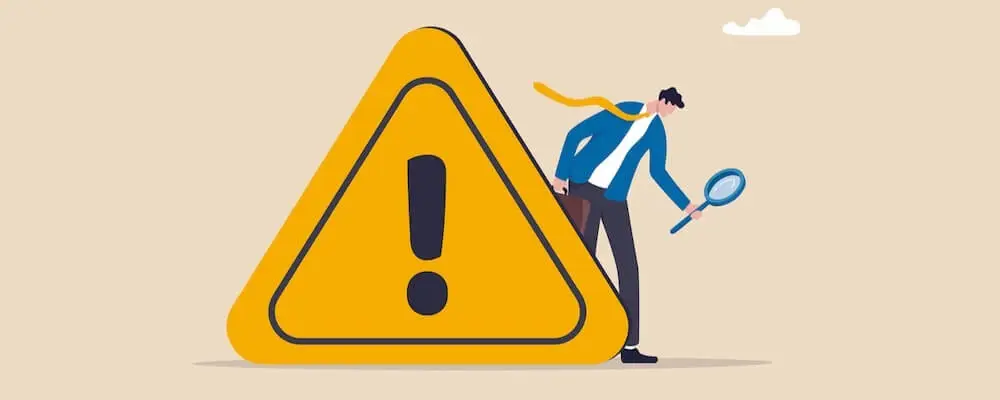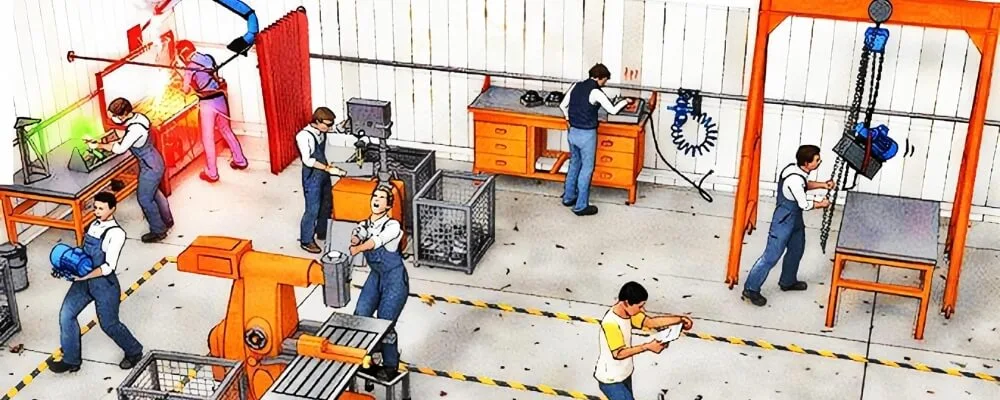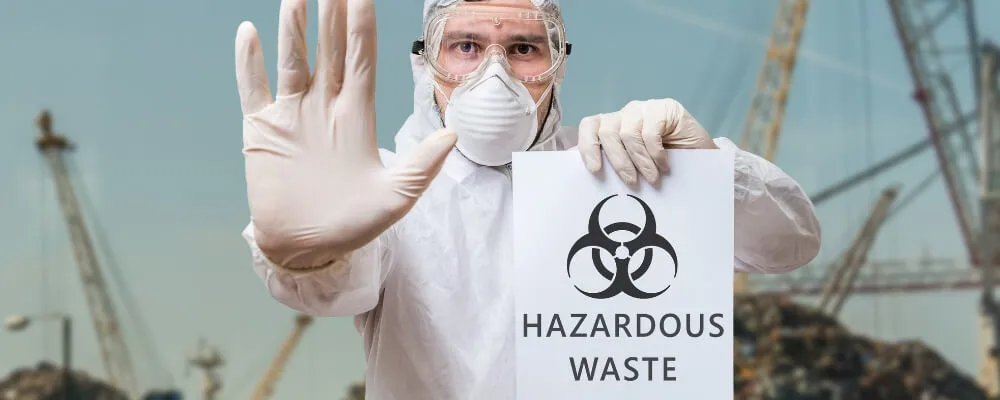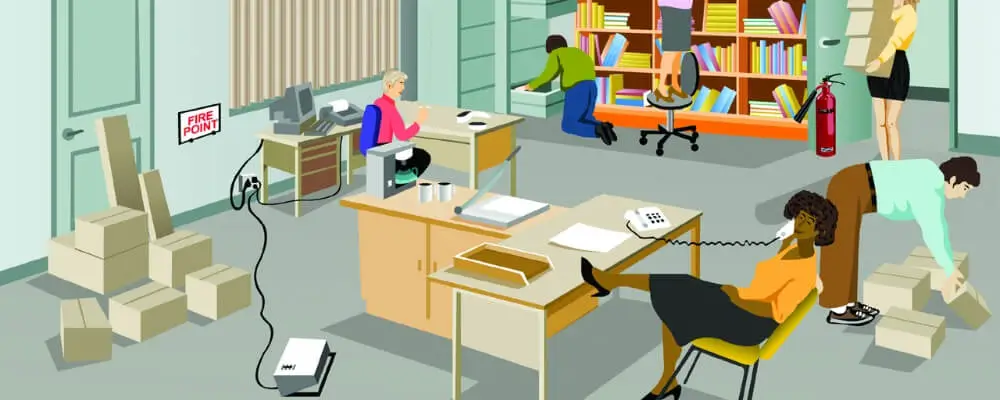In the vast ecosystem of workplace safety, one aspect stands out as a pivotal cornerstone: Hazard Reporting. But what exactly does it encompass? For many, the term might resonate as a buzzword, often heard but not entirely grasped. Whether you’re a seasoned professional seeking a refresher or a newcomer aiming to understand the nuances, this blog endeavors to illuminate the concept for you. From its fundamental definition to the compelling reasons behind its implementation and the intricate process that unfolds when a hazard is reported, we’ll embark on a comprehensive journey.
By the end of this guide, not only will you be well-versed in the importance of hazard reporting, but you’ll also appreciate its undeniable role in sculpting a safer, more efficient workspace. So, buckle up and dive into the world of hazard reporting with us!
What is Hazard Reporting? Definition
Hazard reporting refers to the systematic process of identifying, documenting, and communicating potential safety and health risks in a workplace. These risks, or hazards, can range from physical dangers like faulty equipment or chemical exposure to non-physical threats such as bullying or excessive stress. The primary objective of hazard reporting is to spot these issues before they result in injury, illness, or damage, allowing employers and employees to take preventive action and foster a safer work environment.
The process emphasizes proactive measures rather than reactive solutions. Organizations can address and mitigate risks by enabling employees to report perceived hazards before they escalate into actual incidents or injuries. This not only ensures the well-being of the staff but also promotes a culture of safety and vigilance within the workplace, leading to improved operational efficiency and reduced potential liabilities.

Reasons Why Hazard Reporting is important?
Hazard reporting is crucial for several reasons:
- Employee Safety and Well-being: The most immediate reason is to ensure the safety and health of employees. By identifying potential threats early, measures can be taken to prevent injuries or illnesses.
- Legal and Regulatory Compliance: Many jurisdictions have regulations mandating the reporting and mitigating of workplace hazards. Not adhering to these can result in hefty fines and legal consequences for companies.
- Operational Continuity: Hazards can disrupt operations. For instance, a malfunctioning machine can halt a production line. Reporting and fixing such hazards ensures smooth operations.
- Financial Implications: Workplace accidents can lead to significant costs, from medical expenses for injured employees to equipment repair or replacement. Hazard reporting can reduce these unforeseen expenses.
- Reputation Management: A safe work environment enhances a company’s reputation, making it an employer of choice. Conversely, frequent accidents can tarnish its image and affect its ability to attract top talent.
- Promotes a Safety Culture: Encouraging hazard reporting fosters a culture of safety, where employees are actively engaged in looking out for potential risks and ensuring a safe environment for all.
- Data Collection and Analysis: Regular hazard reporting provides a wealth of data. Analyzing this data can lead to insights into systemic issues and guide larger safety initiatives or process improvements.
- Avoidance of Litigation: Workplace accidents can lead to lawsuits. Companies can significantly reduce their legal liabilities by proactively identifying and mitigating risks.
- Enhanced Productivity: Employees in a safe work environment are more likely to be productive, as they don’t have to worry about potential risks and can focus entirely on their tasks.
- Employee Morale and Retention: Knowing their well-being is a priority boosts employee morale. High morale often translates to reduced turnover and increased employee loyalty.
Hazard reporting is not just a regulatory requirement or a safety measure. It’s a strategic approach that benefits an organization from protecting its most valuable assets – its employees – to ensuring long-term operational and financial success.

What Hazards Should You Report?
Hazards in the workplace come in various forms and can pose risks to employees’ health, safety, and overall well-being. Here’s a breakdown of the types of hazards you should report:
- Physical Hazards: These can cause bodily harm or injury to employees. Examples include exposure to extreme temperatures, electricity, radiation, and loud noise. It could also encompass conditions leading to slips, trips, falls, or injuries from manual labor tasks.
- Safety Hazards: These environmental risks can pose immediate accidents and injuries. They include poor lighting, cluttered workspaces, unguarded machinery, improperly stored hazardous materials, and other conditions that can lead to accidents like fires or falls.
- Psychosocial Hazards: These can harm an employee’s mental health or well-being. Bullying, harassment, work-related stress, excessive workload, lack of control over tasks, and poor organizational culture are some examples. They may not be immediately obvious but can impact an employee’s health long-term.
- Chemical Hazards pertain to any substances used in the workplace that can be harmful if inhaled, ingested, or come into contact with the skin. This includes solvents, pesticides, gases, and other toxic substances. Reporting improper storage, handling, or disposal of these chemicals is vital.
- Biological Hazards: These involve exposure to harmful bacteria, viruses, fungi, and other microorganisms. Workplaces like healthcare facilities, labs, and animal handling areas might have higher risks associated with biological hazards.
- Ergonomic Hazards: These are risks associated with the setup of the workplace and job tasks that can cause musculoskeletal injuries. Examples include repetitive strain injuries from frequent lifting or carpal tunnel syndrome from consistent keyboard use.
- Electrical Hazards: Such hazards involve situations where there’s a risk of electrical shock, fire, or explosions due to faulty wiring, malfunctioning equipment, or inappropriate use of electrical devices.
Any condition or situation that threatens workers’ health and safety, or could potentially damage equipment or the environment, should be reported. Proactively reporting these hazards ensures appropriate measures can be taken to prevent workplace accidents, injuries, or illnesses.

Hazard Reporting vs. Incident Reporting: Are They the Same?
No, hazard reporting and incident reporting are not the same, although they both fall under workplace safety and health management.
- Hazard Reporting pertains to identifying, reporting, and documenting potential health and safety threats in the workplace. A hazard is essentially any object, situation, or condition that has the potential to cause harm to people, property, or the environment. The main objective of hazard reporting is to flag and address these potential dangers before they lead to injury, illness, or damage. By identifying hazards early on, preventive measures can be taken to mitigate or eliminate the associated risks.
- Incident Reporting, on the other hand, is a process that deals with recording specific events or near-misses that have already occurred in the workplace. An incident is an unplanned event that could have resulted in injury, ill health, damage, or other loss. Incident reporting aims to investigate these events, determine their cause, and implement measures to prevent recurrence.
In summary, while both are integral to maintaining a safe work environment, hazard reporting is a proactive approach to identifying potential threats. In contrast, incident reporting is a reactive process that deals with adverse events after they occur.

The Process Of Hazard Reporting
Hazard reporting involves a systematic approach to identify, document, communicate, and address potential health and safety risks in the workplace. Here’s a breakdown of the typical steps involved in hazard reporting:
1. Identify the Hazard
The first step in hazard reporting is recognizing a potential threat. Every workplace has its unique challenges, and hazards might manifest differently. Employees must be trained and aware of common dangers in their work environment. An observant employee with a proactive mindset is invaluable, as the earliest detection of a hazard can prevent accidents or even save lives. This requires regular training, a safety culture, and management encouragement to always be vigilant.
2. Document the Hazard
Once a hazard is spotted, gathering as much information about it as possible is essential. The documentation process is a careful act of recording the nature of the hazard—whether it’s a physical risk like a faulty machine, or a chemical spill or a non-physical risk like workplace bullying.
The location, time, and observation date should be noted, as these can be crucial for investigations and future prevention strategies. Including visual evidence, such as photographs or videos, can offer clarity and serve as irrefutable proof of the hazard’s existence.
3. Report the Hazard
Reporting is a bridge between identifying a potential risk and taking action to mitigate it. Prompt reporting ensures that the hazard is brought to the attention of those with the authority and resources to address it. Depending on the organization, this report might be directed to a direct supervisor, a safety committee, or a dedicated safety officer. The reporting process should be straightforward and accessible, ensuring employees don’t face undue challenges or barriers when communicating a potential threat.
4. Assessment
After a hazard has been reported, it’s essential that it doesn’t just become a filed report but is actively assessed by professionals. This step involves thoroughly examining the hazard, gauging its severity, and understanding its potential implications. It’s not just about understanding the hazard as it exists but projecting forward to comprehend how it might escalate if left unaddressed. Such an assessment provides a foundation upon which corrective actions can be planned.
5. Recommend Solutions
Post-assessment, there needs to be a tangible plan of action. The process of recommending solutions is rooted in understanding the hazard and foreseeing its potential ramifications. This step might involve multiple stakeholders, including those directly working in the affected area, safety experts, and managerial staff.
Solutions could range from immediate actions—like shutting down a malfunctioning piece of machinery—to more strategic measures like redesigning a workspace for better ergonomics or revising a procedure to ensure safer operations. The goal is always to minimize risk while ensuring operational efficiency.

6. Take Action
Upon deriving insights from the assessment and formulating recommendations, it’s imperative to swiftly transition from planning to action. In certain scenarios, the urgency might necessitate immediate interventions, especially if there’s a direct threat to employee safety. For example, an exposed electrical wire might mean an area must be cordoned off immediately or temporarily shut down a malfunctioning elevator.
In other situations, the action could be more strategic, such as scheduling training sessions to enlighten staff about a newly identified potential hazard. The essence of this stage is to ensure that the identified risks are neutralized or minimized promptly.
7. Document the Process
Documentation, often an overlooked step, is a cornerstone of effective hazard management. Organizations ensure accountability and create a valuable repository of information by keeping a detailed record of every stage of the hazard reporting process—from identification to the final resolution. This archive can be instrumental for training new employees, refining safety protocols, or even defending the organization in potential legal scenarios. A well-documented process clearly shows the organization’s proactive approach to safety.
8. Review and Follow-up
Mitigation of a hazard doesn’t mark the end of responsibility. It’s essential to reevaluate and evaluate the actions’ effectiveness. This involves checking if the hazard has been genuinely addressed and if there are any chances of its recurrence.
Additionally, feedback from the ground—especially from employees who interact directly with the changed environment or protocol—is invaluable. Their insights can shed light on any overlooked aspects or suggest further improvements to the measures implemented.
9. Feedback to Employees
Transparency and communication lie at the heart of a robust safety culture. Employees, having played a pivotal role in identifying and possibly rectifying hazards, should be kept in the loop. This instills confidence in the system and emphasizes the importance of collective responsibility. Informing them about the post-reporting steps underscores the organization’s commitment to safety. It can motivate them to remain vigilant, fostering a proactive safety environment.
10. Continuous Improvement
Safety is not a one-time goal but a continuous journey. As with all processes, the hazard reporting mechanism should undergo regular scrutiny. Organizations can preemptively address underlying issues by analyzing reports, especially recurring hazards, before they escalate. This might mean updating training modules, refining safety equipment, or revising existing protocols. Such an iterative approach ensures that the workplace responds to present challenges and is prepared for future ones, evolving with changing dynamics and challenges.

Tips To Make Hazard Reporting More Effective
Making hazard reporting more effective involves a mix of culture, training, and system improvements. Here are some tips to enhance the efficacy of hazard reporting:
- Foster a Safety-first Culture: Encourage a workplace where safety is a top priority. This can be achieved by ensuring that employees at all levels, from entry to management, value and prioritize workplace safety. Employees who believe their well-being is paramount are more likely to report hazards.
- Simplify the Reporting Process: The easier it is to report a hazard, the more likely employees will do so. Consider implementing straightforward reporting mechanisms, like mobile apps or dedicated hotline numbers, that allow quick and hassle-free submissions.
- Guarantee Anonymity: Some employees may hesitate to report hazards due to fear of repercussions. Assure they can submit reports anonymously and that there will be no retaliation against those who raise concerns.
- Offer Training and Awareness Programs: Regularly train employees to recognize hazards and the importance of reporting them. Use real-life examples or scenarios to highlight potential risks and the correct procedures to follow when they encounter them.
- Provide Feedback: Once a hazard is reported and addressed, loop back to the employees and inform them about the actions taken. This ensures transparency and reinforces the importance and effectiveness of their reporting.
- Implement a Review Mechanism: Periodically review the reports and the actions taken. This can help identify patterns, recurrent issues, and areas that need more attention or preventive measures.
- Encourage Near-miss Reporting: Often, accidents are preceded by near-miss events. Encouraging employees to report near-misses can help identify and rectify potential hazards before they result in accidents.
- Recognize and Reward: Consider establishing a system to recognize and reward employees who consistently report hazards or provide valuable insights. This can motivate others to be more vigilant and proactive.
- Maintain Open Communication: Promote open communication channels where employees can discuss concerns, ask questions, or provide suggestions related to workplace safety.
- Stay Updated with Technology: Leverage modern technology, such as AI-driven analytics, to analyze hazard reports and predict potential problem areas. This can aid in preemptive action and formulating more informed safety protocols.
Incorporating these tips can lead to a safer workplace, reduce the likelihood of accidents, and ensure that employees feel valued and protected.
Conclusion
Hazard reporting, in its essence, is not just a procedural obligation but a proactive commitment to safety in the workplace. Through its clear definition, we recognize it as a system to flag potential dangers, ensuring the well-being of all members within an organization. The reasons for its implementation are clear-cut: safeguarding individuals, preventing potential incidents, and fostering a culture of vigilance and responsibility.
The process, while systematic, requires constant refinement and an unwavering commitment from everyone involved. As we’ve journeyed through its intricacies, one thing is certain: an effective hazard reporting system is integral to a thriving, safe, and harmonious work environment. Embracing this system is not just about compliance; it’s about creating spaces where employees can work with peace of mind, knowing their safety is a top priority.

